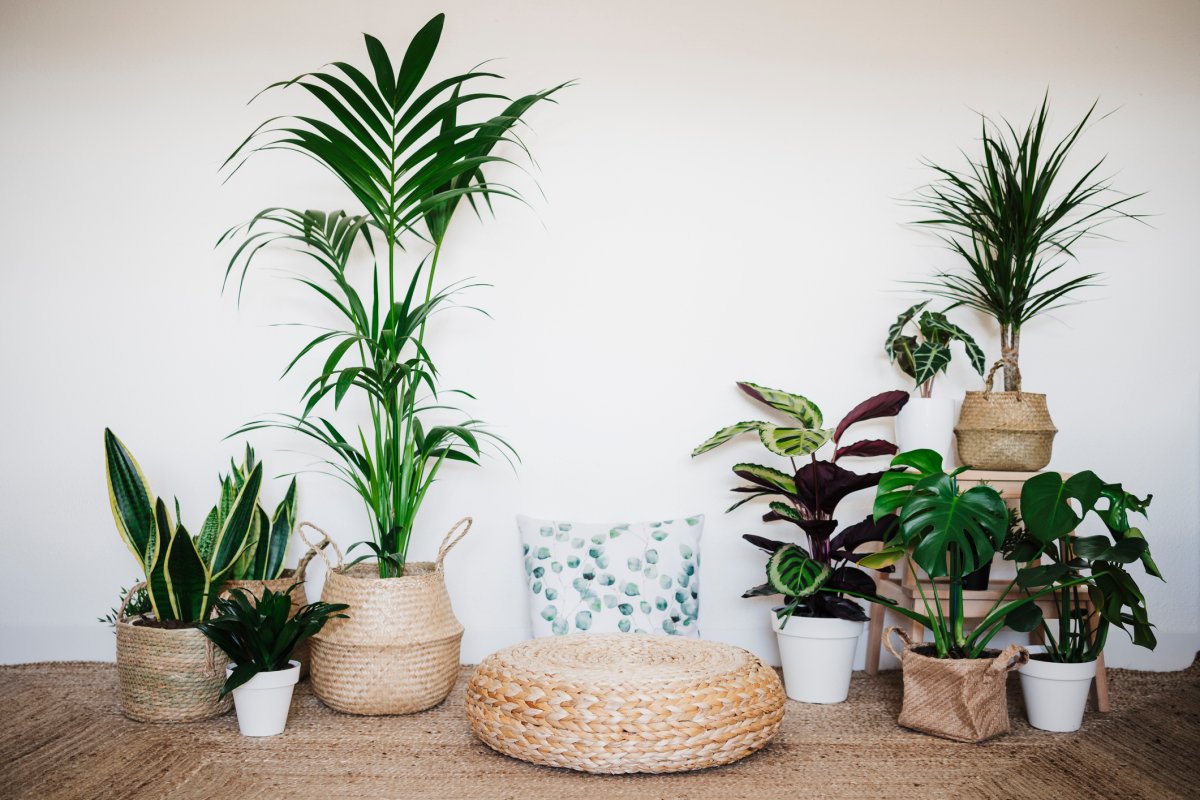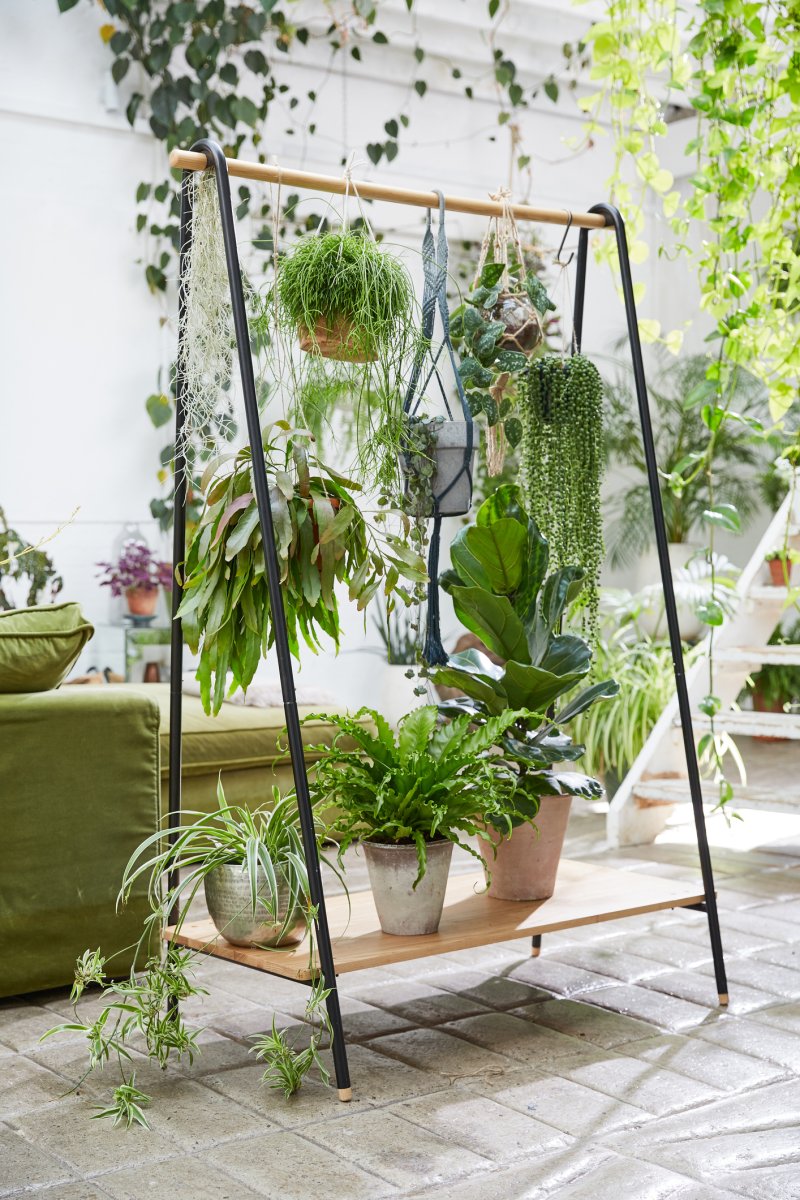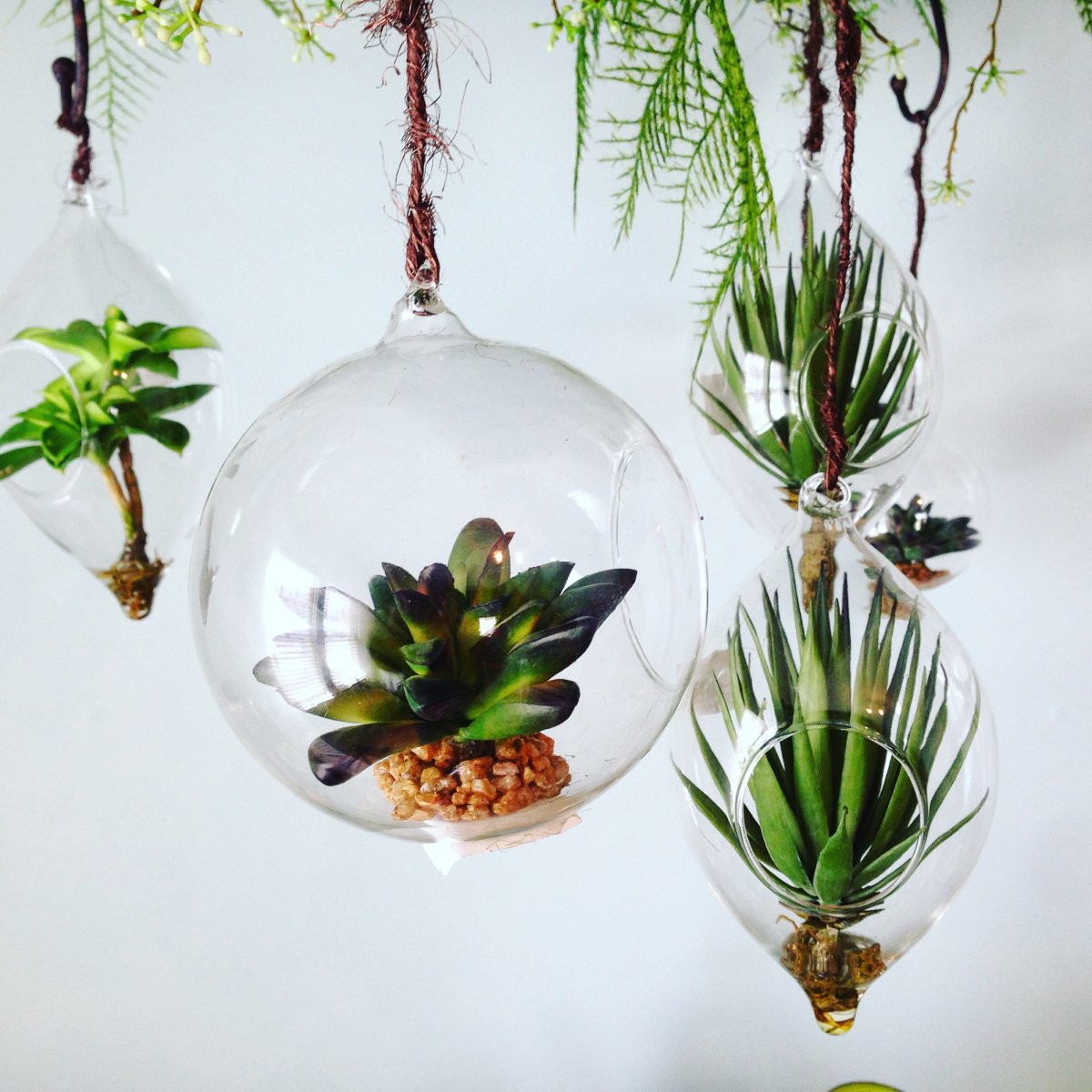The pendulum swings between minimalism and maximalism from year to year. One minute people are focusing on decluttering to achieve an empty, monochromatic space, and the next it’s all about creating their own personal museum at home.
Garden Media Group sees collections being a hit in the next year, according to their new 2026 Garden Trends Report. As the report states: “In a world of digital sameness, instant gratification, and mass production, collecting is making a comeback, especially with Gen Z and Millennials. They’re reclaiming individuality through collecting—a quiet rebellion against disposable culture.”
Plant collections are a core component of this trend, according to Garden Media Group. More people are searching for rare cultivars, new foliage colors, variegations, and other unique plant treasures to display at home as a living gallery to help them feel uplifted, calm, and a slow sense of joy. Here, we’ll explore tips and ideas for creating a living gallery that will elevate and bring peace to your home.
What is a living gallery?
Displaying your plants artistically helps you create your own personal museum, or plant gallery, in which you can tell a unique story. It’s more than just throwing a bunch of plants together in a corner; a living gallery takes some thought and originality to bring it to life.
“Houseplants are so collectible, and it’s trendy to do so these days,” says Justin Hancock, Costa Farms horticulturist. “Thanks in part to social media and the ability to show off your space (and get inspiration from everyone doing the showing off), more plant parents than ever are treating their plant collections like curated displays, almost like an art gallery.”
People are curating living galleries that reflect their identity, taste, and joy. According to the Garden Media report, collectors range from specialists focusing on multiple varieties of a species to explorers looking for rare cultivars and nativists collecting plants from the wild through foraging. Each item collected tells a story of place, season, and moment, as the report points out.
Create a living gallery in your home.
Every living gallery is a unique expression of the homeowner’s creativity and interests. Here are some ideas to help you get started on creating your own living gallery.
Choose a plant theme.
Build a collection around a common theme. “It might be a plant type like pothos or monstera,” suggests Hancock. “One benefit of growing different varieties of the same genus or species together is that it allows you to really enjoy the differences between the individual plants—differences that, in some cases, may be so subtle you never really notice them without the two plants being next to each other.”
While pothos, monstera, and philodendron are three of the most popular plant groups to collect and display, you can curate a living gallery with any plant type or combination. “If cacti or succulents (or both) suit your aesthetic better, for example, you can create stunning collections highlighting the differences in color and texture,” says Hancock.
Stick to a style.
You might also want to decorate with a specific style in mind to reflect your personal tastes. Think wicker baskets for a country vibe, macramé hanging planters for a boho farmhouse aesthetic, classic metal pots for timeless elegance, neutral-colored ceramic containers for a sleek modern look, and brightly painted pots for a Southwestern look.
Use similar containers.
“Build a collection of entirely different plants, but grow them in similar containers,” says Hancock. “Going with one pot style (especially if you use different sizes) creates a through line that allows each plant variety to shine. It’s a great way to contrast the lush leafiness of a peace lily, for example, with the architectural quality of a snake plant.” So once you settle on a style, stick with all metallic pots, wicker baskets, or clear glass vases to hold your plants.

Go vertical if necessary.
If you are short on space, display your plants vertically using hanging planters, plant racks, multi-tiered plant stands, and shelves. Even if you have space, adding vertical elements can help extend your living gallery to blank walls or lofts above.
Include other decorative accents.
Intermix houseplants with décor and other objects, such as family pictures, art, books, vases, dried flowers, sculptures, and knick-knacks. This can create an attractive arrangement that highlights your interests and carries your theme.
Match wall decor to houseplants.
Design an eye-catching gallery of both plants and art by adding some paintings or photographs on the wall behind or above the plants. If you are displaying cacti, for example, hang some desert imagery in that space to tie everything together.
Mix up some elements.
If you prefer a more eclectic look, choose a variety of plant species with different colors, leaf shapes, patterns, textures, and heights. Also, mix up the colors and heights of your style’s containers. Or vary the heights at which you locate them in the room, such as placing some large plants on the floor and smaller ones on floating shelves.

Plant Collection Ideas
The options of plants to display in a living gallery can feel endless, so it’s helpful to explore ideas for collections.
Hancock recommends the following:
- Pothos (Epipremnum aureum): Try tried-and-true golden pothos contrasted with marble queen, Champs-Élysées, Shangri-la, pearls and jade, and greenjula.
- Monstera (Monstera spp.): Monstera Thai constellation is the perfect companion for more vining species like cobra monstera, little Swiss monstera, and monstera pinnatipartita.
- Cacti: Snowman cactus (Tephrocactus geometricus) gives you a totally different look than sand dollar cactus (Astrophytum asterias), brain cactus (Mammillaria elongata cristata), bishop’s cap cactus (Astrophytum myriostigma), or golden barrel cactus (Echinocactus grusonii).
For a creepy or scary plant display, consider these species:
- Brain cactus (Mammillaria elongata cristata)
- Black bat flowers (Tacca chantrieri)
- Medusa’s head (Euphorbia flanaganii)
- Venus flytrap (Dionaea muscipula)
If you are focusing on a hanging plant collection, try these plants:
- Spider plant (Chlorophytum comosum)
- String of pearls (Senecio rowleyanus)
- Golden pothos (Epipremnum pinnatum cv. aureum, also called Devil’s Ivy)
- Heartleaf philodendron (Philodendron hederaceum)

Ways to Display Plants
Along with many plant choices, there are various types of accessories you can use to showcase your living gallery. “Taking a look at how you display the plants also makes a difference,” says Hancock. “Whether you prefer the simplicity of lining them up on a windowsill or shelf or want to create a tapestry of textures by growing plants with different habits (an upright fiddle leaf fig, for example, next to a trailing basket of golden pothos next to a full Chinese evergreen) at different levels, placing them with a sense that each plant has a purpose for being where it is helps to build the curated sense within your collection.”
Here are a few ideas:
- Hanging shelves: Purchase or DIY simple wooden shelves to house your plant collection.
- Multi-tiered plant stand: Save space and display several plants by tucking a multi-tiered plant stand into a corner or up against a wall.
- Hexagon floating shelves: Add a retro yet modern element to a room by hanging honeycomb-shaped shelving to display your plants.
- Ladder plant stand: This is similar to a multi-tiered plant stand. You can purchase one or make your own by upcycling an old ladder.
- Upcycled furniture planters: You can also reuse bookcases, hutches, benches, nightstands, and coffee tables as decorative planters.
- Corner plant stand: Take advantage of an empty corner in your home by using plant stands of varying heights.
- Rolling cart: This is a fun and creative way to move your living gallery from room to room.
- Terrariums: These pieces come in a variety of shapes and sizes, from small tabletop versions to large floor-standing designs. They can be constructed out of all types of materials, such as glass, ceramic, or repurposed items like fish tanks.



